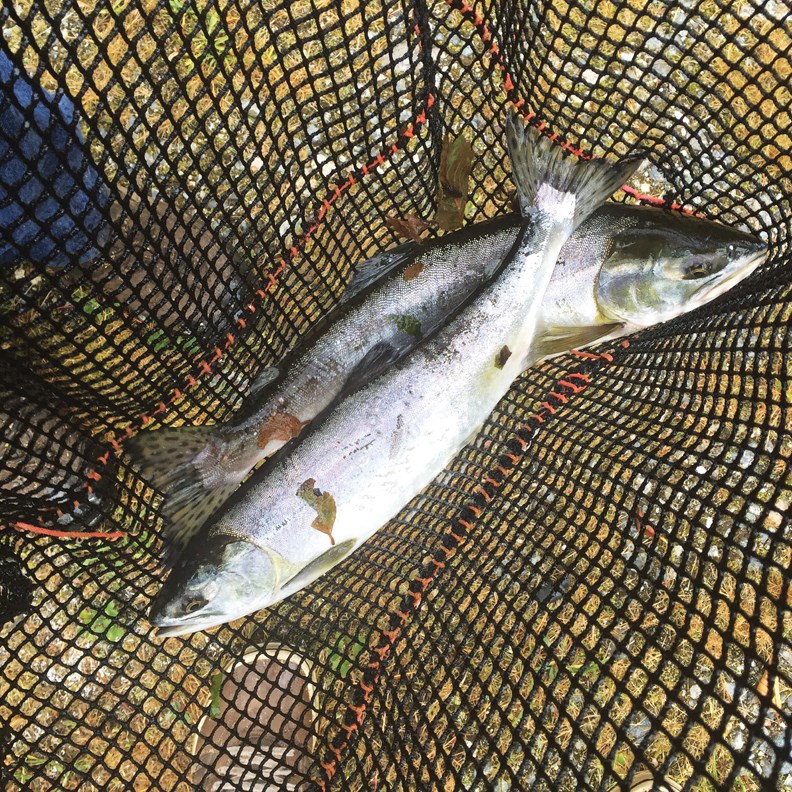Pink salmon have begun returning to the Chapman Creek Hatchery, but manager David Burnett says water conditions are far from ideal.
Burnett said water flows in Chapman Creek are about 190 litres per second, and the temperature of the water has been reaching the high teens most days.
He explained that a combination of low flow and warm temperatures can be especially harmful to the juvenile coho salmon and steelhead living in the creek. “They’re only about 4 or 5 grams in size,” he said. “The fish are [also] open to more predation.”
In fact, despite cooler, wetter weather so far this spring and summer, the situation isn’t much different than it was at the start of August, 2015, according to Burnett.
The hatchery releases about 300,000 pinks every two years, and Burnett said they’re able to get upstream to the hatchery in adverse conditions better than some species, but their spawning success can be affected. He also said that low water flows could mean the hatchery can’t take in as many fish, because they need water coming from the creek into the hatchery for the spawning tanks.
“If a big school comes in [now] we’re not going to take them into the hatchery,” he said.
“We might be okay this year, the way it’s looking,” Burnett said. “But if there’s no more rain [in the next month] that’ll throttle the flows down again, and odds are fishing will be prohibited in the creek.”
Burnett also said the first coho have begun appearing at the mouth of the creek, but they generally won’t start trying to move upstream to spawn until September and October. He says, though, that they’re still anxious about how conditions will look at that time.
When asked about water flows on Chapman Creek during the July 28 Sunshine Coast Regional District (SCRD) board meeting, general manager of infrastructure services Bryan Shoji said SCRD staff have discussed the situation with Burnett, that the SCRD is releasing more water than it did last year, and the flow is “adequate” for the health of the fish.
Burnett told Coast Reporter that he’s continuing to work with the SCRD and the Department of Fisheries and Oceans (DFO) on finding ways to improve the water flow and maintain something closer to the 300 to 500 litres per second that DFO recommends for fish bearing streams.



